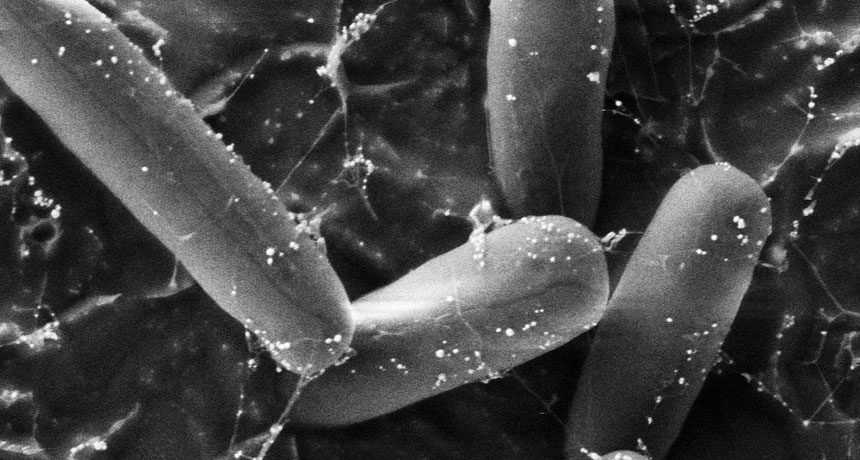Questions for ‘Nanosilver: Naughty or nice?’

Rod-shaped bacteria are shown dotted with silver nanoparticles. The very tiny silver particles can kill those bacteria.
ZEISS Microscopy/Flickr (CC-BY-NC-ND 2.0)

Rod-shaped bacteria are shown dotted with silver nanoparticles. The very tiny silver particles can kill those bacteria.
ZEISS Microscopy/Flickr (CC-BY-NC-ND 2.0)